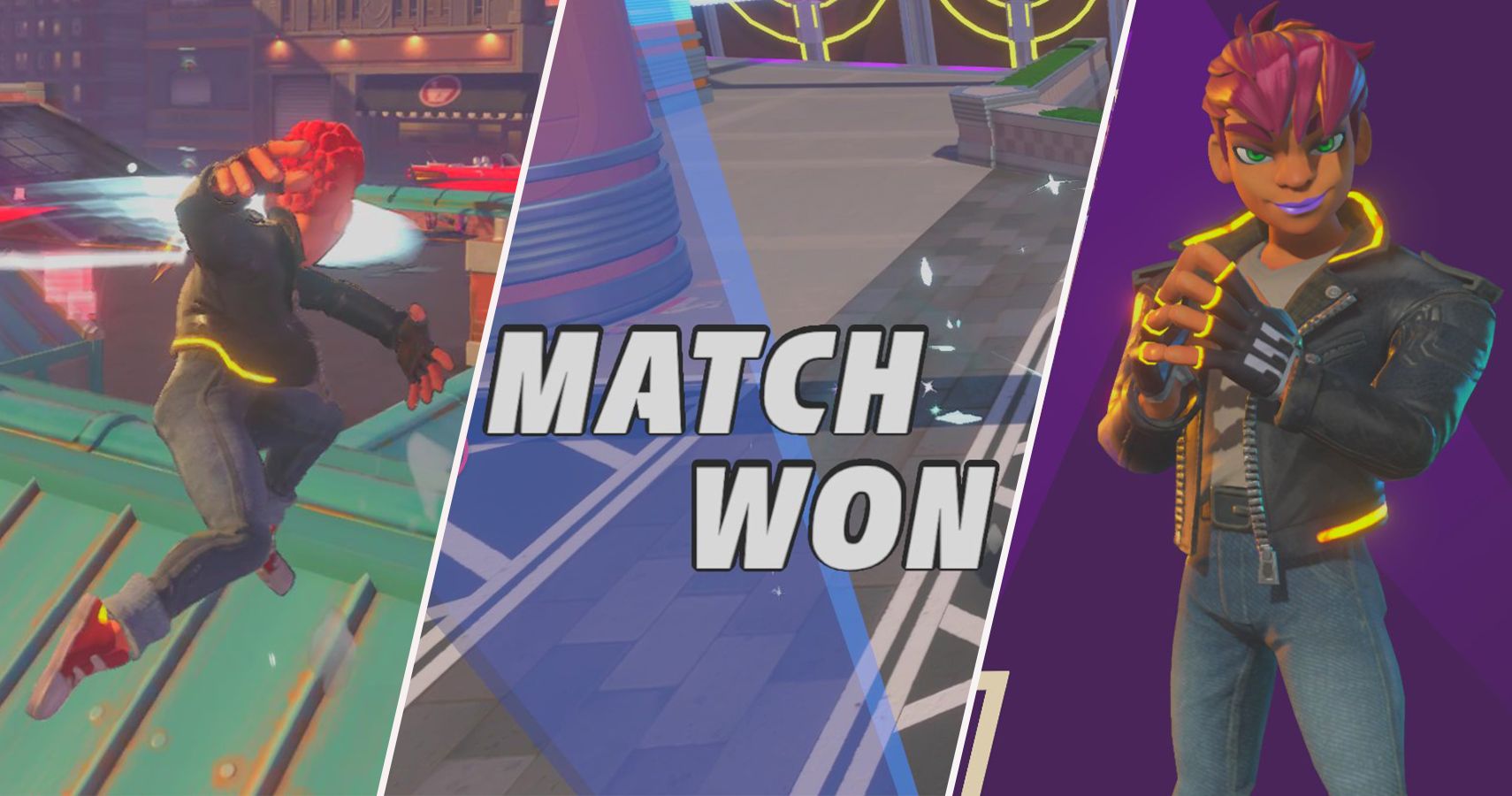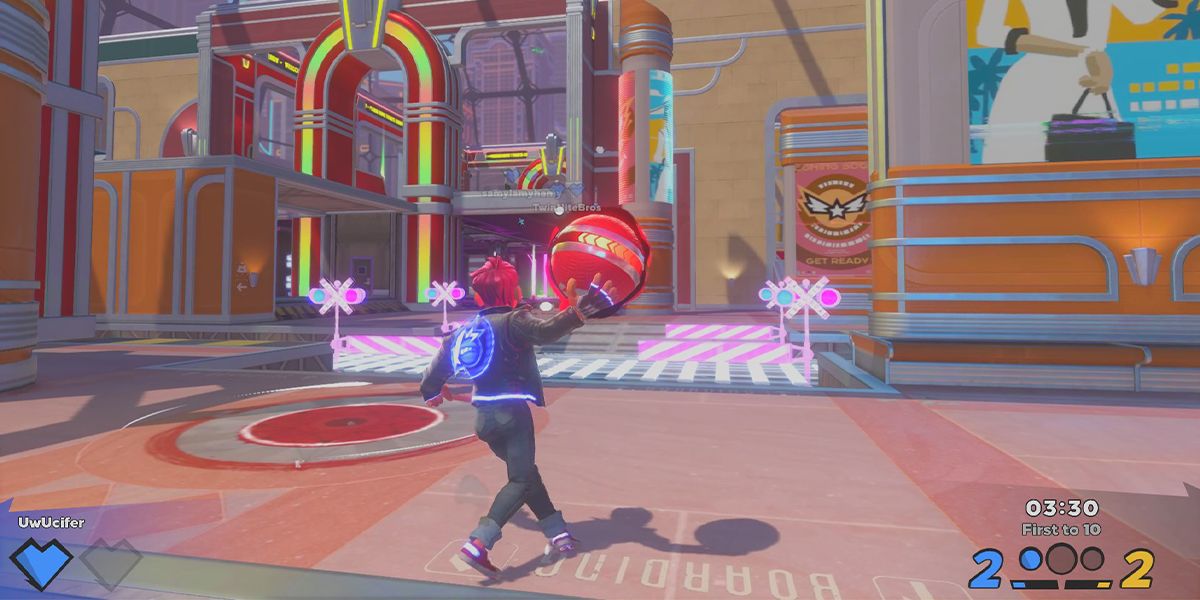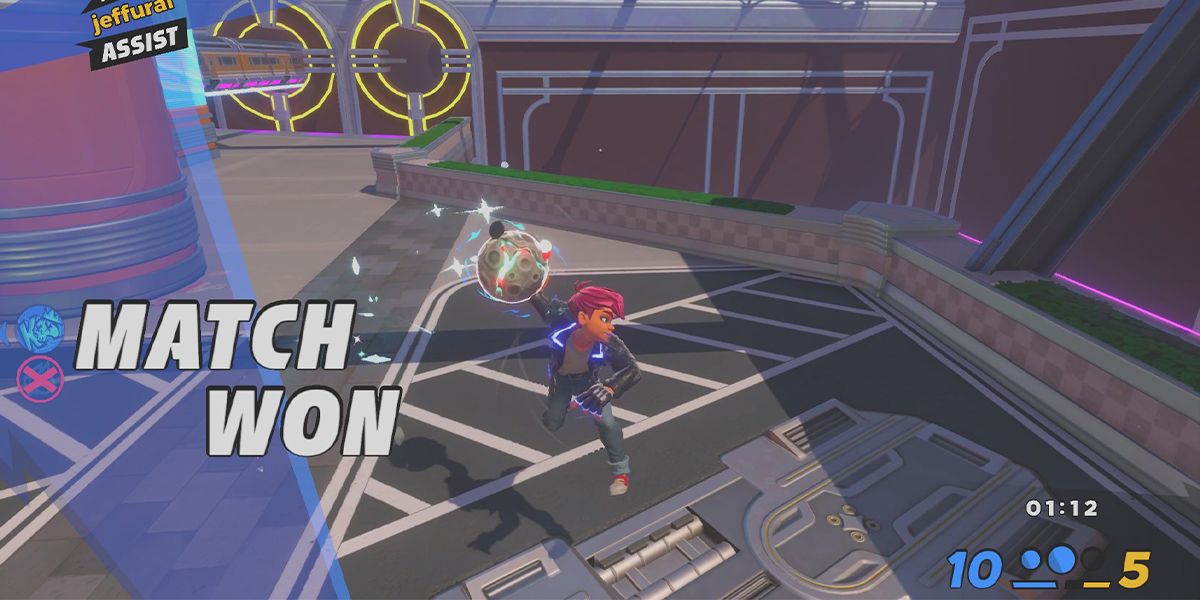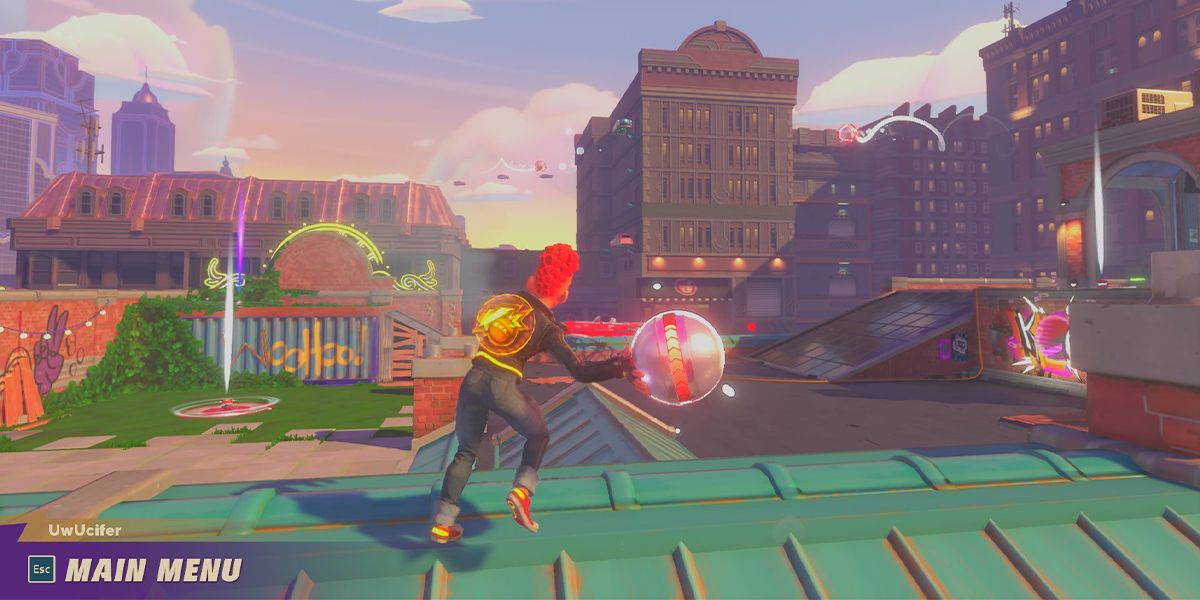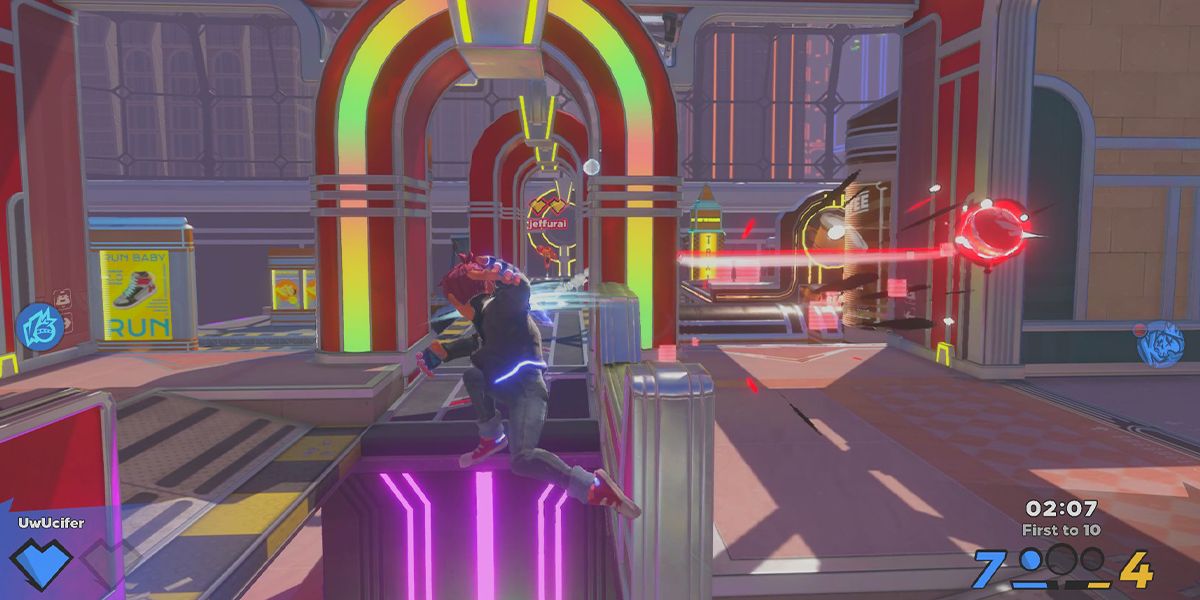Knockout City is one of the most unique titles to drop in 2021 and it's a breath of fresh air amongst a sea of stagnant genres and sequels. The premise is simple, pitting teams of players (or sometimes solo players) against one another in fast-paced, acrobatic dodgeball matches. At its core, Knockout City feels like a traditional third-person run-and-gun style arena "shooter" but the experience manages to be deceivingly in-depth.
A lot of this depth comes from the controls, giving players the ability to lob the ball at enemies, fake passes and throws, and even curve the ball in different directions. Curveballs can be especially useful, helping to both fake-out opponents as well as navigate some of the trickier parts of Knockout City's well-designed maps. But how exactly do you throw a curveball and when is the best time to do so?
How Do You Throw A Curveball?
- Spin by pressing Circle (PlayStation)/B (Xbox)/A (Switch)/E (PC).
- Throw the ball during the spin animation.
Throwing a curveball in Knockout City is pretty simple but mastering it will take practice. In order to toss a curve, all you need to do is spin and throw the ball during the spin animation. Spins can be performed while in the air but can also be activated from the ground (your character will still elevate slightly upward if you do this). You can also control the direction that you spin based on what direction you are moving before activating the spin. This is important to note because the ball will curve in the direction you are spinning when it is thrown.
Curveballs can be thrown either by charging up your shot or quickly tossing. How long you charge the ball before you throw it will determine how fast the curveball exits the player's hand and moves through the air.
Why Throw A Curveball?
The curveball has many applications in Knockout City and it's perhaps the most useful throw once it's mastered. A well-timed curve can throw off your opponent's "catch" mechanic, making it much more difficult for them to field an incoming ball. It's also much harder to track a curved ball through the air, especially if there are obstacles in the way. It's even possible to catch opponents off guard by curving the ball around their teammates in order to hit them. Bending the ball at certain angles can almost guarantee that your throw will connect and using a multi-ball powerup is especially useful as multiple curveballs at once are a nightmare for opponents.
Here are some useful scenarios to consider when deciding if your throw should be a curveball or not:
- Curveballs are vital to navigating around objects that opponents may be hiding behind. If the object is small enough (a stack of boxes or a pipe) then you can still tag your opponent when they least expect it.
- Use line-of-sight in combination with curveballs to make it harder for your opponent to anticipate where the ball is. By curving the ball around obstacles and walls, it can make it much more difficult to catch.
- Using a fake-out and then curving the ball in the opposite direction quickly can be a great way to throw your opponent off.
- Points are scored in Knockout City based on knockouts, not hits. Because of this, it's better to target opponents with "lower health." Using a curveball can help you reach a low-health opponent that is hidden behind their teammates.
- Jumping high into the air and using a curveball at the height of your jump can be a great way to get a strange angle on your opponent, making it harder for them to catch the ball.
- Map awareness is important in Knockout City. There are few things more frustrating than throwing a curveball only to watch it hit a nearby wall or object. Be sure to experiment with the arc of the curveball and learn when (and where) you can throw it safely.

